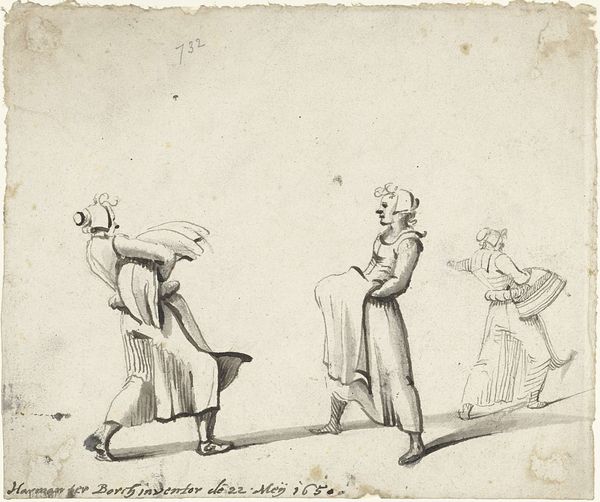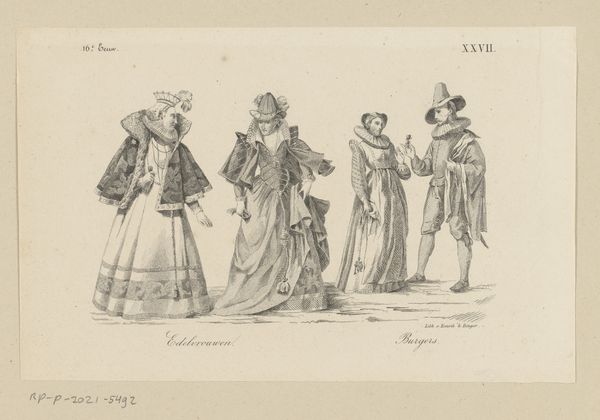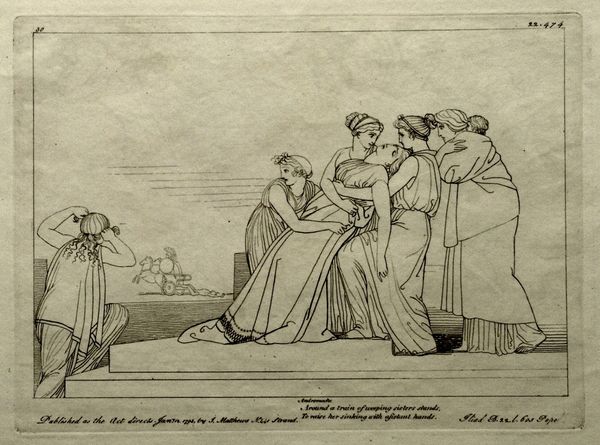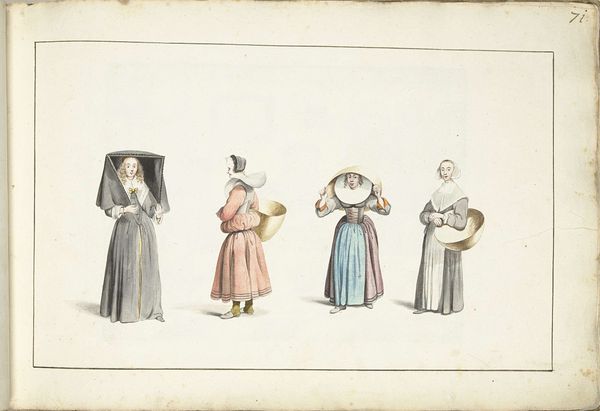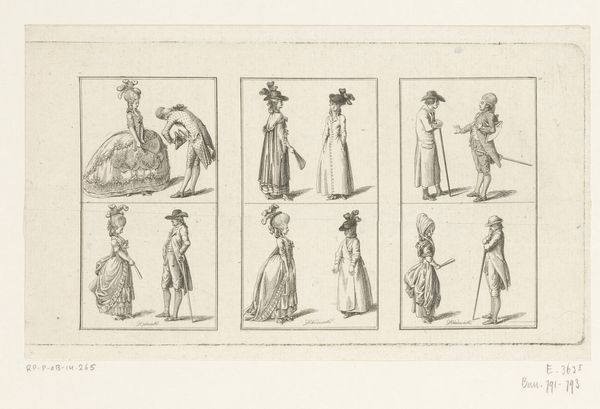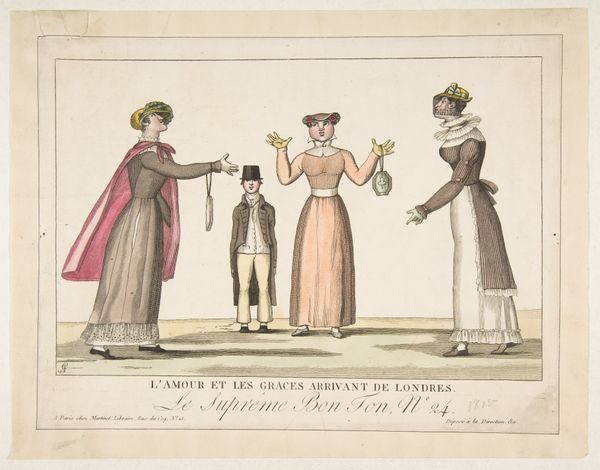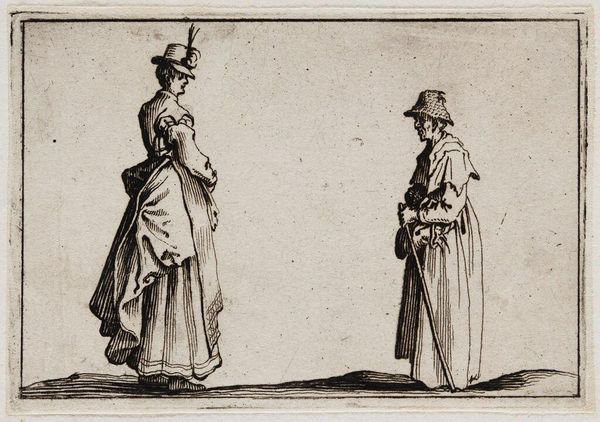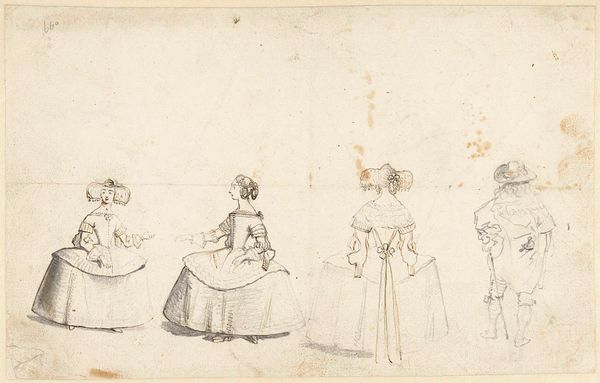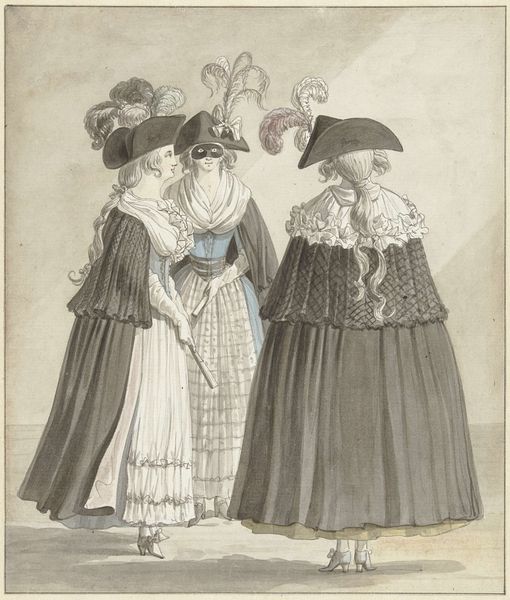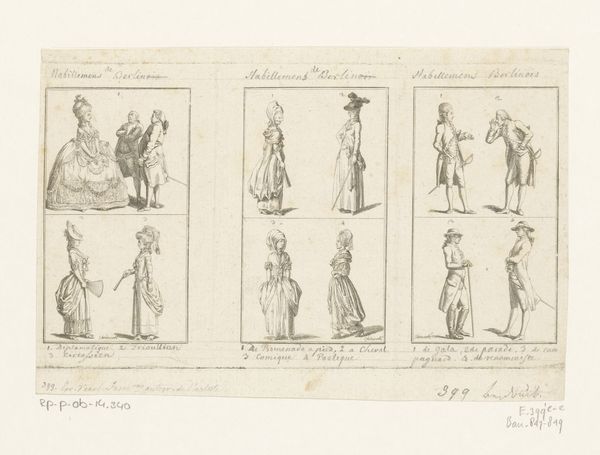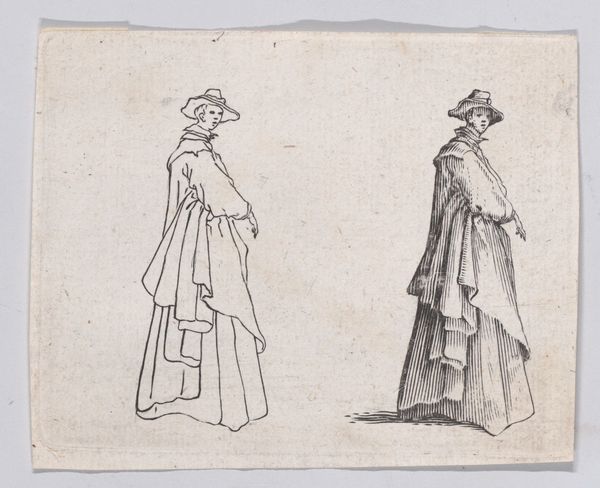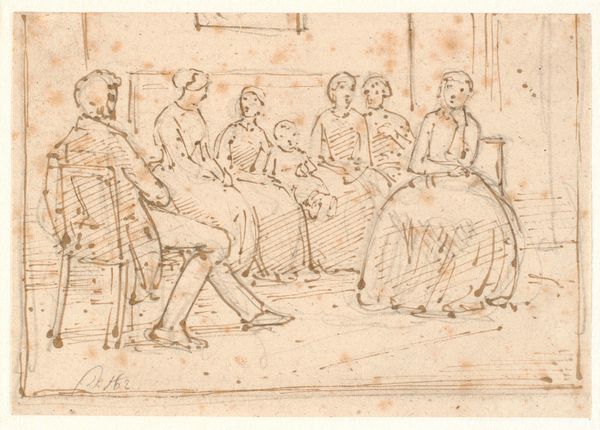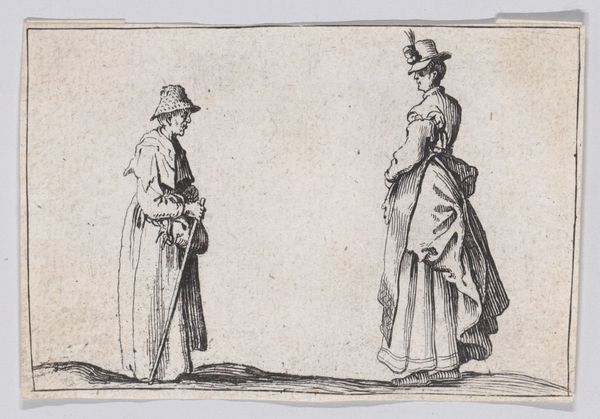
drawing, print, etching
#
drawing
#
neoclacissism
# print
#
etching
#
figuration
#
ancient-mediterranean
#
line
#
history-painting
Copyright: Public domain
This line engraving illustrates a scene from Homer's Iliad and was created by John Flaxman in 1793, amidst the late 18th century's fascination with classical antiquity. Flaxman presents a scene of women in flowing robes, embodying a vision of classical femininity, but let’s consider the context in which this image was produced. The late 1700s was a time of revolution and upheaval in Europe and the Americas, and this Neoclassical style can be interpreted as both an embrace of Enlightenment ideals and an escape from social and political realities. The image, devoid of color, emphasizes form and line, a choice that subtly mirrors the era’s discussions around gender, virtue, and the aesthetic ideals that often confined women. Helen, the central figure, stands apart, her gesture suggesting a moment of contemplation or regret. What does it mean to depict Helen, the cause of so much strife, with such delicate lines? This image invites us to consider how representations of women, even those drawn from ancient tales, reflect and shape the societal values of their time.
Comments
No comments
Be the first to comment and join the conversation on the ultimate creative platform.
